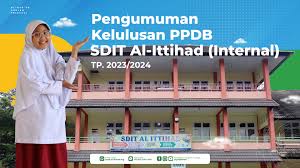Teknologi Informasi (DIA) has long been a driving sdit.in force behind global economic and societal development. From the first computational devices to the interconnected digital world we navigate today, IT continues to shape nearly every aspect of our lives. Pada artikel ini, we explore the evolution of IT, its current trends, and what the future holds for this dynamic field.
The Birth and Growth of Information Technology
Teknologi Informasi, at its core, refers to the use of computers, networks, perangkat lunak, and other systems to store, process, and transmit data. In the 20th century, IT began its ascent with the invention of the first computers, which were large, complex machines used for basic calculations and processing. These early systems were primarily utilized by the military, governments, and academic institutions.
The breakthrough moment for IT came in the 1950s and 1960s when computer processing power grew, and more industries began recognizing the potential of these machines for business applications. This era also saw the rise of software engineering as a discipline and the creation of mainframes and personal computers, which brought computing to the masses.
Pada tahun 1990-an, the internet began to transform IT, connecting the world in ways that had previously been unimaginable. The dot-com boom of the late 1990s and early 2000s saw the rapid expansion of internet-based businesses and the development of e-commerce, media sosial, and digital communications.
Current Trends in Information Technology
As we move further into the 21st century, IT continues to evolve at a breathtaking pace. Some of the most prominent trends include:
- Kecerdasan Buatan (AI) and Machine Learning: AI and machine learning are revolutionizing industries ranging from healthcare to finance. These technologies enable systems to analyze vast amounts of data, identify patterns, and make decisions without human intervention. In areas such as customer service, autonomous vehicles, and personalized recommendations, AI is reshaping how we interact with technology.
- Cloud Computing: Cloud computing has become a staple of modern IT infrastructure. It allows businesses to store and access data over the internet rather than relying on local servers. The scalability, fleksibilitas, and cost-effectiveness of cloud services such as Amazon Web Services (AWS), Microsoft Azure, and Google Cloud have made it an attractive option for organizations of all sizes.
- Cybersecurity: As reliance on digital systems increases, so does the threat of cyberattacks. Cybersecurity is more critical than ever, with data breaches, ransomware attacks, and identity theft becoming frequent concerns. To protect sensitive information, organizations are investing heavily in security measures, encryption, and training programs.
- Internet of Things (IoT): The IoT refers to the growing network of connected devices that communicate and share data. From smart home devices like thermostats and refrigerators to industrial sensors that monitor machinery, the IoT is enhancing productivity, kenyamanan, and safety across various sectors.
- 5G and Connectivity: The rollout of 5G networks promises to revolutionize the way we experience the internet. With faster speeds, lower latency, and greater connectivity, 5G will drive advancements in autonomous vehicles, smart cities, and real-time communications.
- Blockchain: Initially associated with cryptocurrencies like Bitcoin, blockchain technology has evolved into a broader solution for secure, transparent transactions. It is being adopted in industries such as finance, supply chain management, and healthcare to improve security and reduce fraud.
- Augmented Reality (AR) and Virtual Reality (VR): AR and VR technologies are transforming industries such as gaming, pendidikan, and healthcare. These immersive experiences enable users to interact with digital environments in ways that were previously not possible, offering new possibilities for training, hiburan, and communication.
The Future of Information Technology
As IT continues to evolve, the future holds exciting possibilities. Here are some areas where we can expect significant advancements:
- Quantum Computing: Quantum computing promises to revolutionize problem-solving capabilities by processing data at speeds that far surpass current capabilities. This technology has the potential to impact fields such as cryptography, drug discovery, and climate modeling.
- Ethical AI and Regulation: As AI continues to become more integrated into our lives, the need for ethical considerations and regulatory frameworks grows. Issues such as bias in algorithms, data privacy, and accountability in AI decision-making will be critical discussions in the coming years.
- Digital Transformation of Healthcare: The pandemic accelerated the adoption of digital healthcare solutions, such as telemedicine and electronic health records. Di masa depan, IT will continue to play a key role in improving patient care, enabling real-time health monitoring, and advancing precision medicine.
- Sustainability in IT: As the environmental impact of technology becomes more apparent, the IT industry will focus on sustainability. This includes energy-efficient data centers, reducing e-waste, and creating eco-friendly technologies that align with global sustainability goals.
- The Metaverse: The concept of the metaverse, a fully immersive virtual world where users can interact in real time, is gaining traction. Companies are exploring how this digital space can transform social interaction, perdagangan, dan hiburan, creating new opportunities for businesses and consumers alike.
- Automation and the Workforce: Automation driven by AI and robotics will continue to reshape the workforce. While there are concerns about job displacement, there is also the potential for the creation of new roles and opportunities in fields such as AI development, cybersecurity, and data analysis.
Kesimpulan
Information Technology is not just a field of study or a business sdit.in tool—it’s a powerful force that shapes our world in profound ways. Seiring kemajuan teknologi yang semakin maju, IT will remain at the forefront of innovation, driving economic growth, enhancing our personal lives, and transforming industries. By staying informed and adaptable to the latest trends and developments, we can harness the power of IT to create a more connected, efficient, and sustainable future.

